Affiliate links on Android Authority may earn us a commission. Learn more.
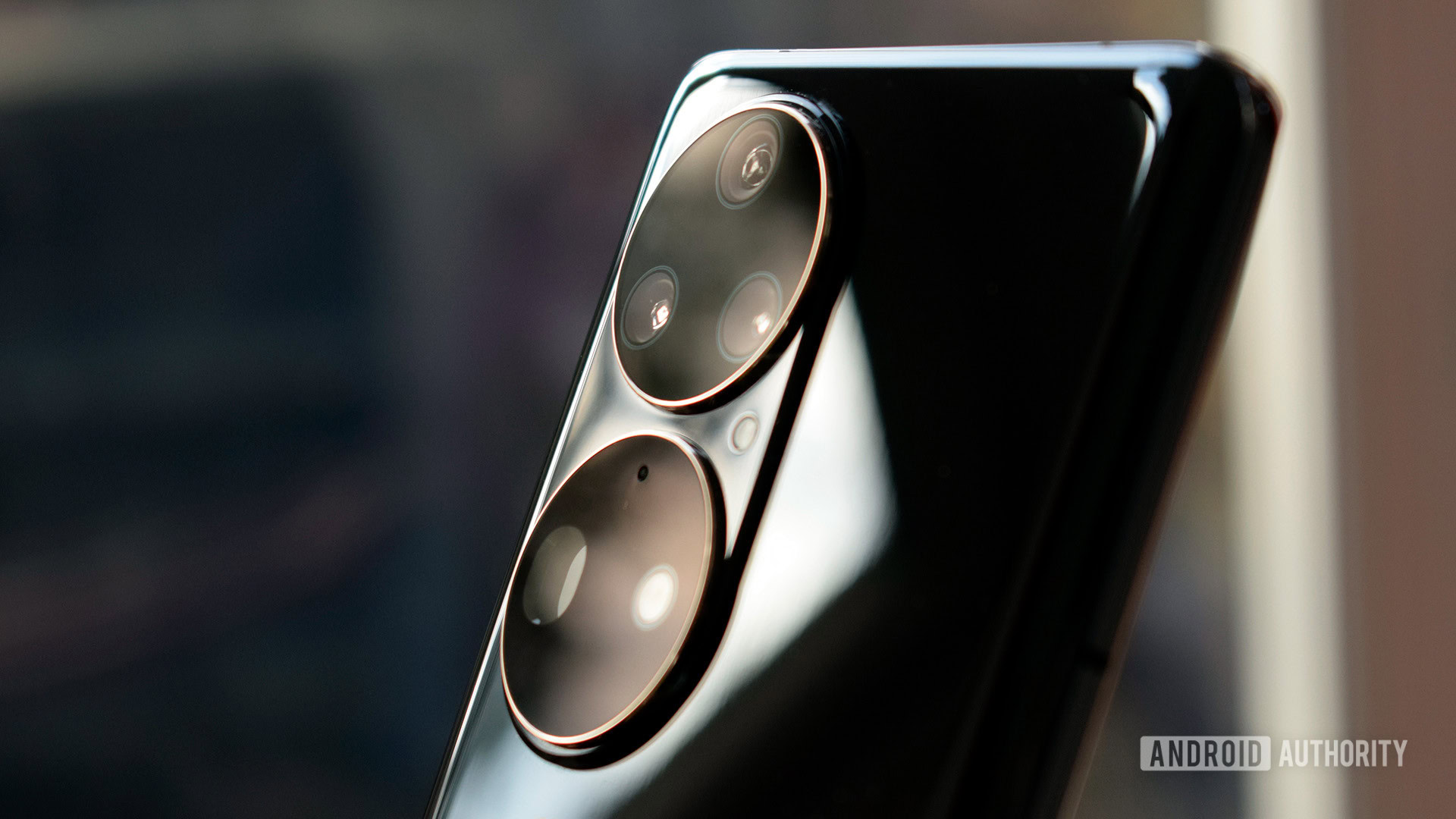
Huawei P50 Pro
What we like
What we don't like
Our scores
Huawei P50 Pro
Determined to forge on without Google, the HUAWEI P50 Pro is built to wow with an all-new outfit and dazzling photography skills. The company notes that the P50 Pro is a return to the philosophies that sit at the heart of high-end photography and is doubling down on the phone’s camera credentials as its major selling point. But as we know all too well, that’s not the only topic of conversation that crops up when discussing HUAWEI’s iconic P series. Can we finally look past the software situation and celebrate HUAWEI for its sumptuous hardware? Read Android Authority’s HUAWEI P50 Pro review to find out.
Update, February 21, 2022: This review has been updated with details regarding the glass construction and HUAWEI’s update policy.
What you need to know about the HUAWEI P50 Pro
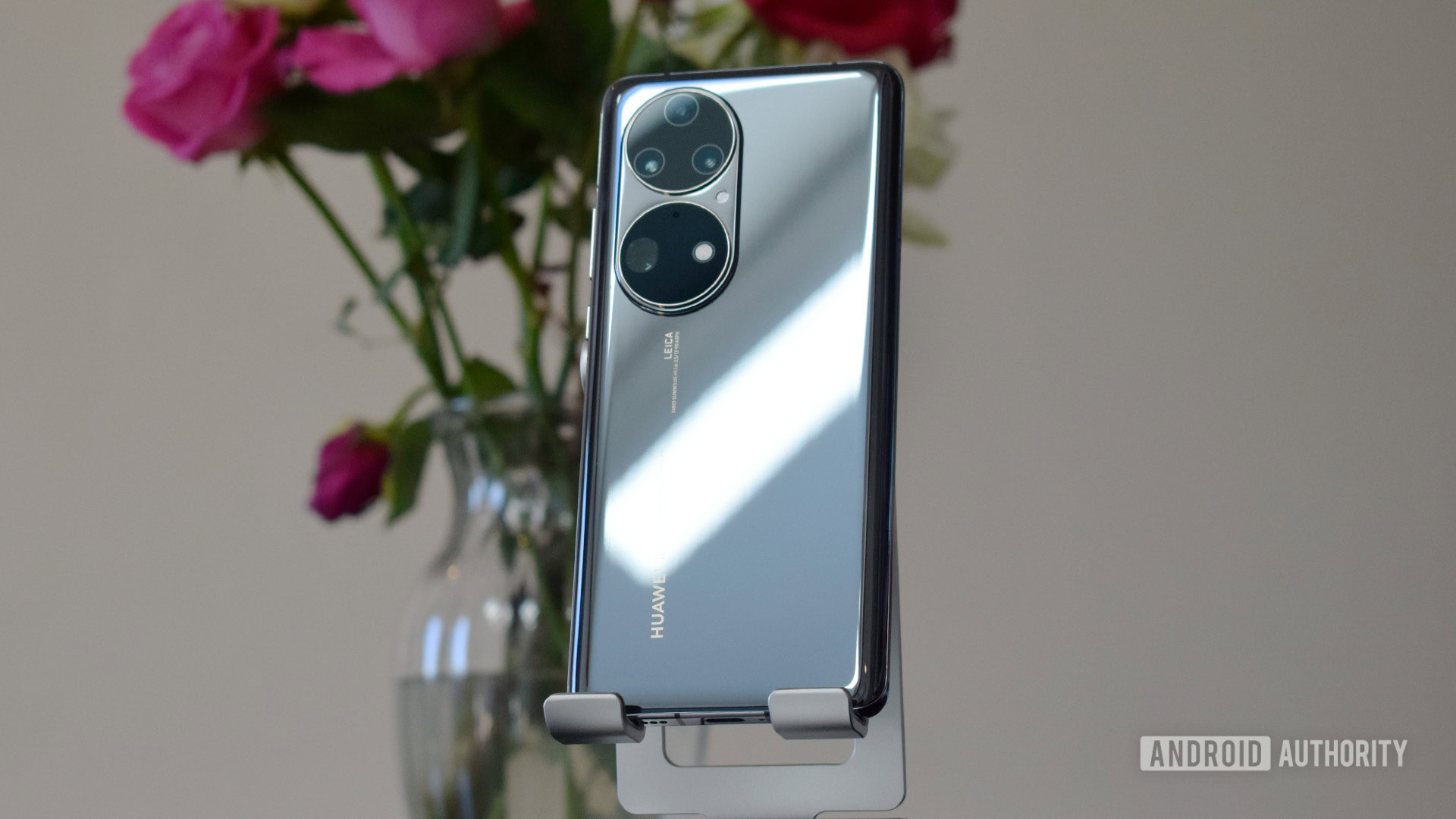
- HUAWEI P50 Pro (SD888, 8GB/256GB): £1,099 / €1,199 (~$1,355)
HUAWEI has announced three flagship smartphones for this year’s line-up. There’s the China-exclusive HUAWEI P50, the HUAWEI P50 Pro, and foldable P50 Pocket clamshell. The latter is perhaps the company’s most eye-catching new model but it’s the P50 Pro that will hold the gaze of the power-user crowd.
HUAWEI announced a fair few variants of its P50 Pro flagship too but the only model available to order in Europe, at the time of writing, is the 8GB RAM, 256GB storage option for a total of £1,099. Outside of China, the HUAWEI P50 Pro ships with a last-generation Snapdragon 888 processor in lieu of the equally old but in-house Kirin 9000 SoC.
Due to the ongoing US trade dispute, HUAWEI is unable to sell 5G phones to international customers. So not only does the phone have an older processor than other flagships launching in 2022 but it doesn’t provide 5G capabilities either. For global markets, the phone is also running EMUI 12 (based on 2021’s Android 11), rather than HUAWEI’s own much-touted Harmony OS platform. Overall, the phone is not the most future-proof purchase in a number of areas. Of course, the phone is still missing Google apps and service support too due to the ongoing fallout from the US-HUAWEI trade ban.
Read more: HUAWEI buyers guide — everything you need to know
Even so, the HUAWEI P50 Pro boasts plenty of high-end technology, including a 6.6-inch 120Hz 2,700 x 1,228 OLED display with 300Hz touch sampling. There’s also a Leica-branded quad-camera setup featuring monochrome, ultrawide, and telephoto lenses, along with blazing-fast wired and wireless charging capabilities on board. This is a classic HUAWEI flagship packaged with brand new aesthetics.
HUAWEI offers the P50 Pro in Cocoa Gold and Golden Black colorways in Europe, the latter of which is pictured in this review. The phone comes with a 66W SuperCharge brick and USB-A to USB-C cable in the box. The HUAWEI P50 Pro can be purchased from HUAWEI’s online store and Amazon in selected European countries. A HUAWEI P50 Pro UK release date has also been scheduled for March 22. Don’t expect it to ever officially hit US shores.
How is the new design?
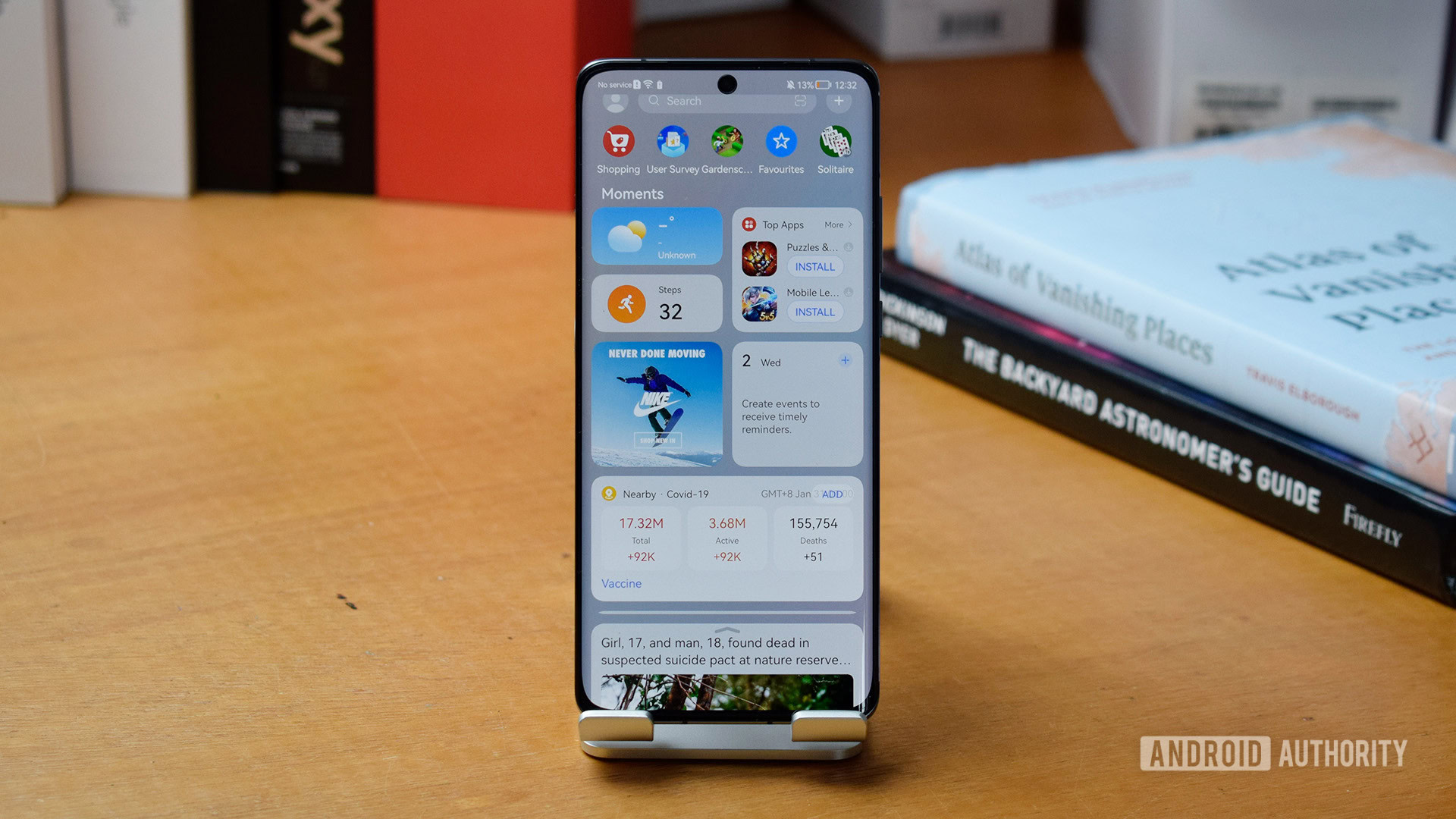
After the somewhat bulky HUAWEI P40 Pro, the P50 Pro is a return to silky sleek style. The phone is just 8.5mm thin but feels even more wafer-like owing to its 6.6-inch curved glass display. The handset’s style is somewhat reminiscent of HUAWEI’s own Mate 20 Pro or the even older Samsung Galaxy S8, at least in terms of handling.
From the back, the HUAWEI P50 Pro is far more eye-catching. Dubbed its Dual-Matrix Camera design, the two-ring camera housing is certainly iconic, though not entirely unique. The layout sports four different cameras, accented with a gold trim that adds some additional subtle flare. This isn’t a look everyone will fall in love with but it quickly grew on me.
Huawei’s latest design sports an aluminum frame but it’s most noticeable at the top and bottom of the phone. The sides are too thin to be able to really feel it. On the bottom, you’ll find a speaker grille, USB-C port, and a SIM slot that also includes space for HUAWEI’s overpriced Nano Memory expandable storage. Sound from the speakers is pleasing enough and although it suffers from the usual bass-biased bottom speaker setup, there’s a reasonable stereo presentation on offer here.
This latest design is classic HUAWEI hardware packaged in an eye-catching new outfit.
The glass back is a standard affair but the highly reflective coating is a dust and fingerprint magnet, which is something to think about if you’re a stickler for a clean handset. The phone is IP68 rated for dust and water resistance. We asked HUAWEI for clarification on what glass is being used on the phone for protection, but the company only confirmed that it was not Gorilla Glass on the version you can buy in Europe. Without any mention of an equivalent, we have some fair concerns over its durability.
As for the screen, the P50 Pro’s OLED display looks great for games, movies, and the like. The default white balance looks too warm to my eye though this can be tweaked in the settings.
There is one odd quirk with the display, though. Although the P50 Pro sports a 120Hz panel, it defaults to HUAWEI’s “Smart” mode out of the box and my testing saw this switch between 60Hz and 90Hz for the vast majority of apps. 120Hz mode does kick in but only for a selection of HUAWEI applications, such as the Calendar or File Explorer, likely to show off EMUI’s fancy animations. Of course, dynamic refresh rates are very common but the P50 Pro’s feels particularly variable, and therefore laggy, in pursuit of longer battery life.
How good is the HUAWEI P50 Pro’s camera?
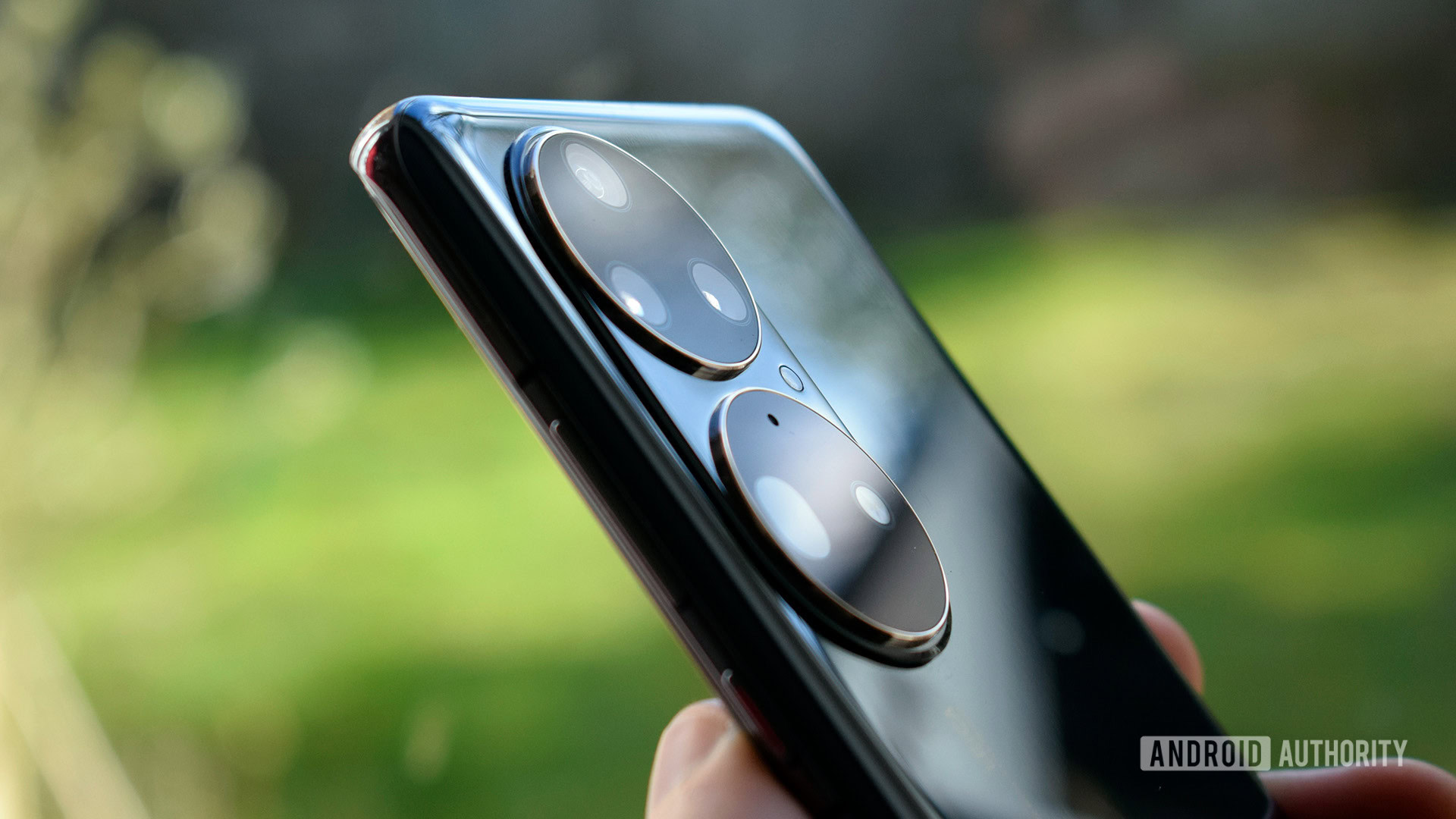
Of course, one of the biggest reasons to buy a HUAWEI phone for the better part of half a decade has been for the brand’s camera prowess. The HUAWEI P50 Pro sports a novel quad-camera setup, combining a 50MP main sensor with a 40MP monochrome, 13MP ultrawide, and 64MP telephoto sensor with a 3.5x optical zoom. But the package isn’t just about numbers — HUAWEI imbues the camera with its proprietary XD Optics lens correction technology and XD Fusion Pro Imaging Engine. The latter encompasses what HUAWEI calls Super HDR, Super Zoom, and AIS Pro technologies.
The results speak more than specifications and buzzwords, so here’s a selection of images captured on the HUAWEI P50 Pro. You can view the full-res samples in this Google Drive folder.
As we’ve come to expect from HUAWEI over the years, the camera is one of the best in the business. Details and exposure in good lighting are immaculate and macro shots are free from the fringing and lens distortion you’ll see from other smartphones. The main lens can handle some macro subjects well enough but the camera automatically switches to the ultrawide lens for very close subjects.
Much like last year, HUAWEI’s camera package is super snappy to focus, even on moving subjects. The phone continues to outperform its rivals when it comes to low-light photography as well. Forget about night mode — you’ll seldom need it here.
An outstanding smartphone camera.
My one complaint is that colors can be a little oversaturated. Some of the grass and sky blues in outdoor shots look a little too lush and vibrant — this is the UK in winter, not Switzerland in the summer! Saturation is a problem with the selfie camera and portraits too, resulting in an unrealistic level of pop that might look good on social media but less so in a frame. At the same time, very long-range shots appear terribly washed out, but that’s pretty common from a lot of phones.
Still, this doesn’t ruin the phone’s sheer versatility. Don’t buy into the 200x zoom marketing nonsense — the phone pretty much taps out at 10x, but that’s more than enough for virtually every scenario. More importantly, image quality is very consistent whether you’re shooting with the ultrawide, main, at 2x, 5x, or out at 10x. The image quality decreases slightly at longer distances through the periscope shooter, particularly when it comes to color and sharpening, but there’s no indication that you’re ever switching to an inferior lens. HUAWEI’s XD Fusion Pro seems to work wonders.
Finally, HUAWEI’s ultrawide now gives you 4:3 rather than 16:9 shots too. Its previous-gen efforts adopted a 16:9 ratio in an attempt to make its ultrawide shots look wider than they were. Thankfully, the P50 Pro offers a truly ultrawide experience that’s a major step back from the main camera.
The selfie shooter is flexible too. It’s pretty wide by default but offers options for 0.8x and ultrawide too, should you need to fit more in. Although the latter option has a little too much perspective distortion to be useful in all but the most desperate circumstances. HUAWEI offers a familiar suite of ‘beautification’ portrait options, including skim smoothing, contour, and background effects. But these are disabled by default, thankfully.
When it comes to video, the HUAWEI P50 Pro offers a similar assortment of features. Video resolution is capped at 4K at 30 or 60fps. There’s also a slo-mo option that supports 1080p capture at 960fps, and a dual-view mode to capture using front and rear or two rear cameras at once. HUAWEI’s video stabilization technology is very robust and the low-light performance, while decent, isn’t as solid as the photography mode. There’s some noticeable grain, particularly when zooming in with the telephoto camera in low light.
Check out: The best camera phones you can get
After all these years, HUAWEI still sits comfortably near the top of the pack but isn’t out ahead enough to say the P50 Pro is a must-buy for discerning photographers. Still, camera capabilities remain a feather in HUAWEI’s cap that really make me long for the days when its phones didn’t have so many other caveats. Speaking of those caveats…
Does the HUAWEI P50 Pro have Google apps?
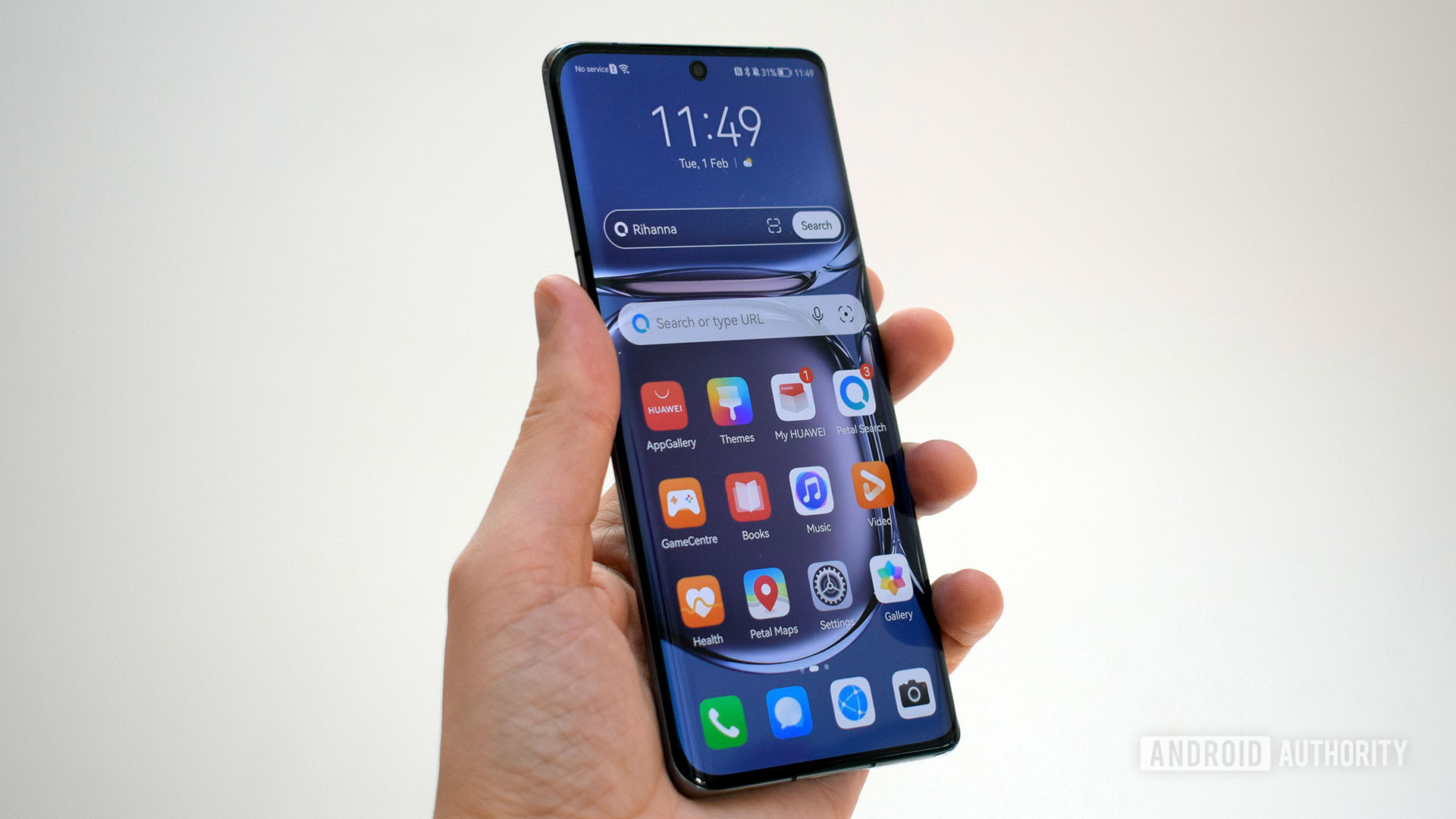
It’s impossible to talk about HUAWEI these days without mentioning the software situation. Unfortunately, HUAWEI still doesn’t have Google apps or GMS support, meaning you’re still missing out on the more familiar Android experience. A selection of the apps, such as Uber, won’t work natively due to the absence of API support, despite HUAWEI’s investment into its HMS alternative. That said, there are some workarounds for several apps if you take the time to find them. To use the same example, you can still operate Uber through a very discrete web-based app alternative.
This is a far-from-premium-feeling software experience, but not just because it doesn't have Google services.
It’s also worth noting that the phone’s EMUI 12 OS is based on Android 11 rather than Android 12 or its in-house Harmony OS 2.0. Although the phone ships with the December 2021 security update, the OS doesn’t support all the latest Android APIs or features. We also don’t know if or when the phone will receive an update to Android 12 or for how long HUAWEI will support the phone into the future. A HUAWEI spokesperson told us: “Updates will be provided and maintained regularly throughout the full lifecycle of the product.” With similarly priced phones from Samsung, Apple, and Google all offering long-term support pledges for three years or more, the lack of any quantifiable guarantee is a concern.
Still, if you can look past all that, EMUI 12 is a great-looking OS skin, flush with pretty animations and consistent app-theming that other brands could learn a thing or two from. HUAWEI is also breaking its reliance on other ecosystems with its own Books, Music, and Video stores. The HUAWEI faithful may find utility in these more integrated services, though they lack the content depth of other services. HUAWEI’s ecosystem also encompasses Health, Gaming, Petal Maps, and its Multi-screen Collaboration tools, along with the usual assortment of utility apps.
HUAWEI has gradually addressed a few bugbears from the GMS situation too but it’s still not a seamless experience. For example, the home screen search won’t find apps as consistently as Petal Search, and you’ll still often be referred out to third-party app stores for downloads. Even HUAWEI’s own App Gallery won’t find some apps unless you input in extremely specific terms, which is just poor. You can find most (but certainly not all) of what you need — you just have to jump through a few hoops to get there.
The sheer level of ads and marketing tickboxes would make Zuckerberg blush.
Unfortunately, EMUI 12 is bloated with pretty awful software suggestions, notifications, and pop-ups. The default home screen has as many suggestion folders as it does pre-installed apps, and it’s just messy. Incessant permission requests make getting anything done a chore. Sure, these only pop up once, but having to confirm permissions three or four times in the process of completing one task is irritating and shows that HUAWEI’s system isn’t well integrated. Instead, the phone passes you from app to app. Installing software, for instance, can be done through the regular search, Petal Search, a browser, or App Gallery, and each of these will happily pass you to one of the others.
Similarly, too many of HUAWEI’s apps pester you for permission to send you offers via notifications or texts. This isn’t something you expect to see when opening up Petal Maps, for instance. There are ads embedded into Petal Search too, which cheapens the user experience. Being faced with a full-screen ad when opening the video app confirmed just how far HUAWEI has fallen. Sadly, these will be familiar irritants for anyone who’s used a recent HUAWEI phone or tablet, and while others are guilty of offering expensive phones with an ad or two (hello, Samsung), the P50 Pro is riddled with them. The end result is a far-from-premium-feeling software experience, which isn’t good enough when you’re spending £1,099.
What about the performance and battery life?
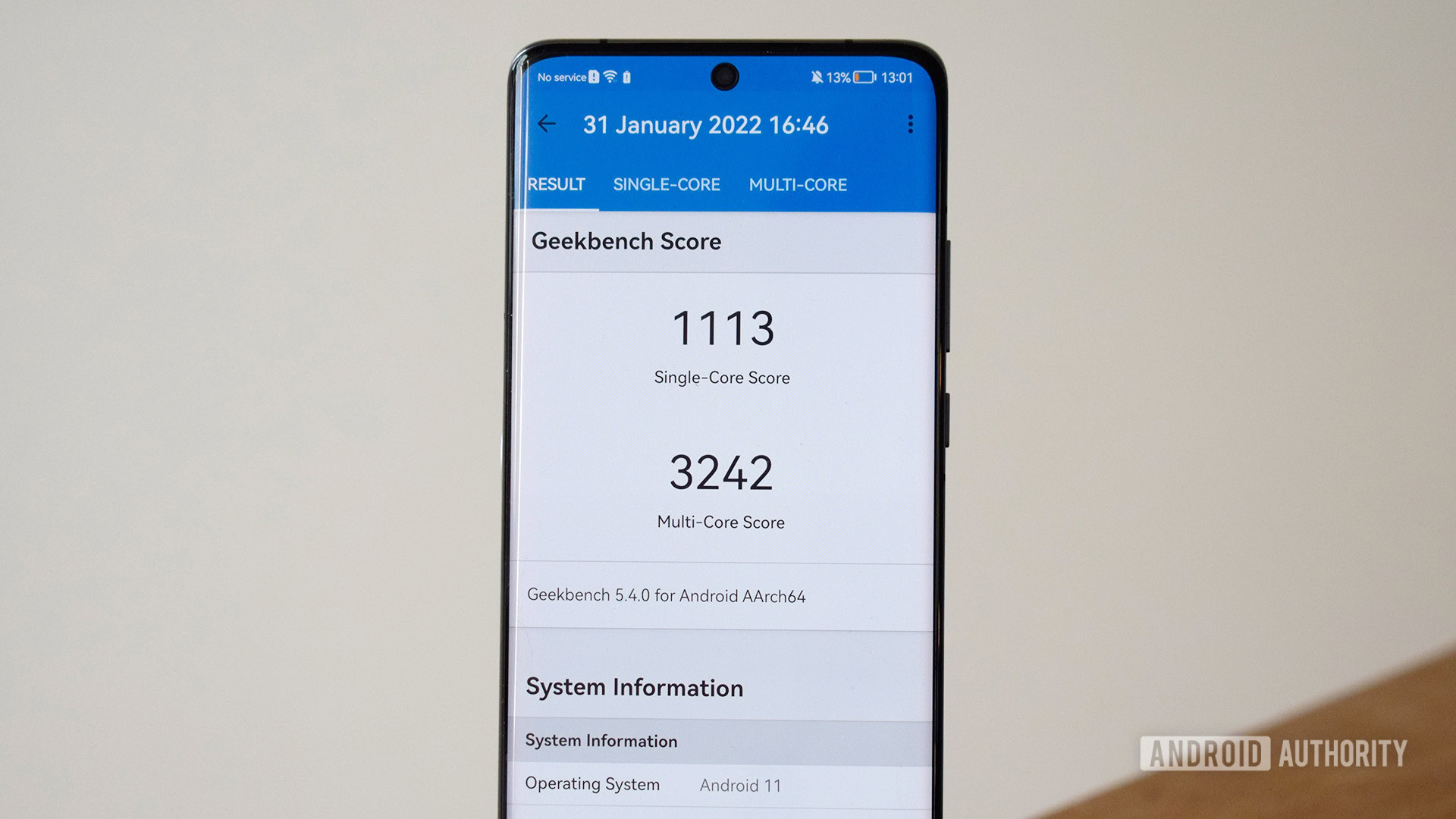
With a Snapdragon 888 onboard, performance is pretty much what you’d expect from a 2021 smartphone (albeit not a 2022 one), but there are a few notable caveats. The benchmark results below are right in the mix, however, the CPU results were lower than rival phones unless you flick performance mode on. CPU benchmarks end up closer to last year’s Kirin 9000 or even 2020’s Snapdragon 865 than typical 888 scores. The difference between performance mode on and off results is roughly 15-20%. Fortunately, GPU scores don’t appear to be affected.
As such, I did notice the odd stutter when opening up HUAWEI’s left-most Assistant home screen page, possibly due to the sheer overload of widgets. Likewise, the pulldown gesture for search hangs for a fraction of a second before displaying the page, and the screenshot capture animation isn’t the smoothest. However, this could also be down to the aforementioned aggressive refresh rate swapping. Apps certainly don’t feel sluggish to use but the UI doesn’t offer the buttery smooth experience we’ve come to expect from premium-tier flagships.
HUAWEI has historically been more aggressive than most when it comes to performance throttling but this doesn’t seem to have had much of a positive effect on battery life this time around. The 4,360mAh battery will certainly take you through a full day of moderate to heavy use. But power users certainly shouldn’t expect anywhere near two days of full use on a single charge.
Disappointingly, shooting pictures hammers the battery far quicker than other phones. Perhaps HUAWEI’s algorithms simply don’t run as efficiently on Snapdragon as they did on Kirin? Likewise, streaming video can take a toll on use time a little more than on other phones. HUAWEI has clearly attempted to tame the phone’s battery consumption but the end result doesn’t feel quite in the same league as previous-generation models.
Related: The best phone charging accessories
Anything else?
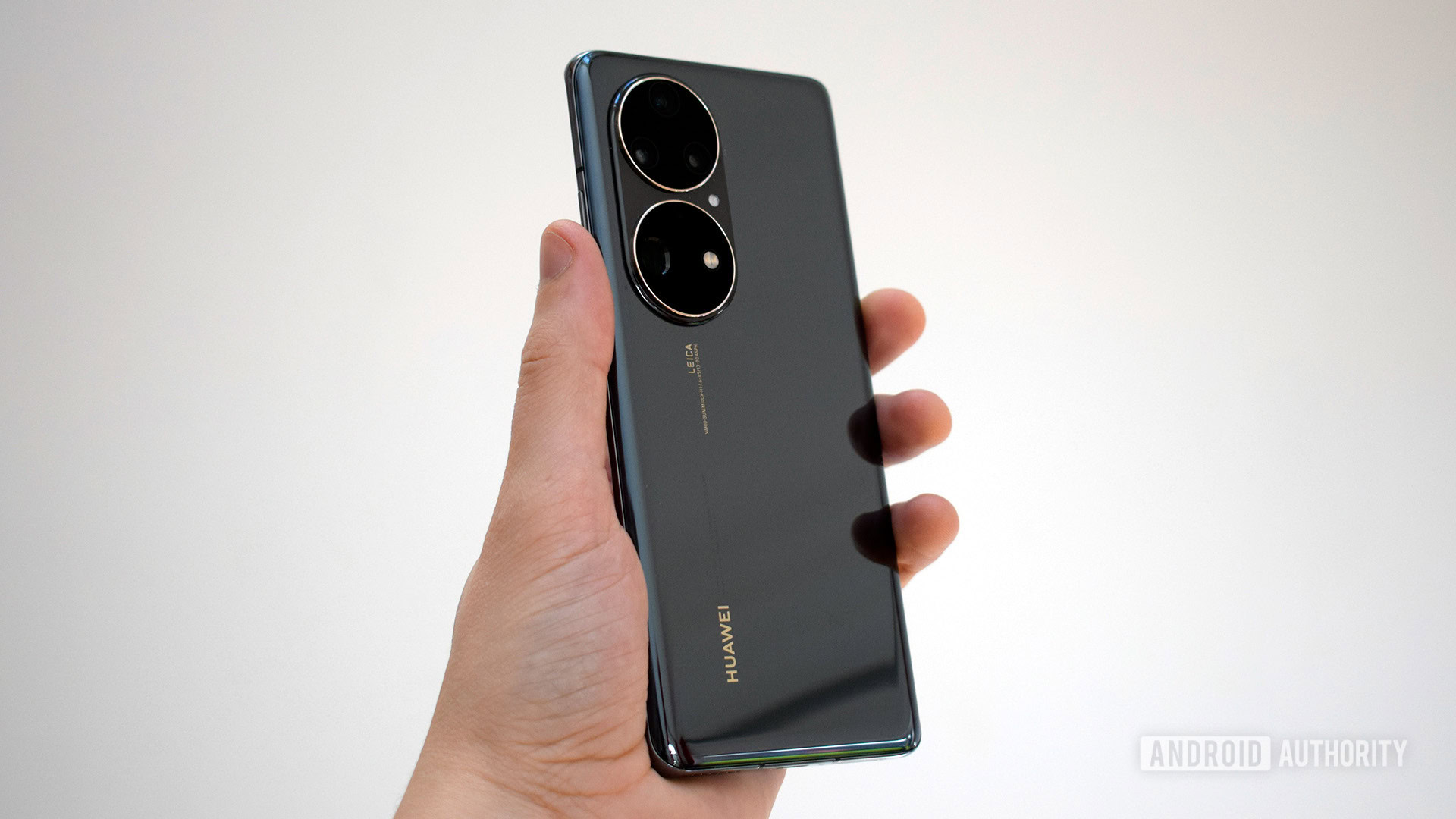
- Fast and wireless charging: With 66W wired and 50W wireless Super Charge capabilities, the HUAWEI P50 Pro is one of the speediest in the business. The handset takes about 55 minutes to full, which isn’t quite as fast as the power level suggests. The 40W Mate 30 Pro took about an hour as well. Although you’ll need to use HUAWEI’s own accessories to obtain these peak speeds, the phone also charges at 15W over USB Power Delivery too.
- In-display fingerprint scanner: The in-display optical fingerprint reader is finicky to set up and a little slow to unlock but otherwise works well. It’s certainly a little better than the dubious optical scanner used in Google’s Pixel 6 series. If you don’t like this option, HUAWEI also supports face unlock. But as this simply uses the front-facing camera, it’s not the most secure option around.
- Bluetooth audio: The HUAWEI P50 Pro sports SBC, AAC, LDAC, and LDHC audio codecs but there’s no support for any of Qualcomm’s aptX technologies.
- Connectivity: Unfortunately, there’s no 5G support at all here. The phone is also lacking Wi-Fi 6E, which is a staple of pretty much all Snapdragon 888 and newer handsets. You definitely won’t find the fastest networking capabilities here.
HUAWEI P50 Pro specs
| HUAWEI P50 Pro | |
|---|---|
Display | 6.6-inch OLED 2,700 x 1,228 resolution 120Hz refresh rate 300Hz touch sampling |
Processor | Qualcomm Snapdragon 888 (4G only) |
RAM | 8GB |
Storage | 256GB Nano Memory expandable storage, up to 256GB |
Power | 4,360mAh battery 66W wired charging 50W wireless charging |
Cameras | Rear: - 50MP main (ƒ1.8, OIS) - 13MP ultrawide (ƒ2.2) - 64MP telephoto (ƒ3.5, OIS, AF) - 40MP monochrome (ƒ1.6) Front: - 13MP main (ƒ2.4) |
Durability | IP68 |
Software | EMUI 12 |
Dimensions & weight | 158.8 x 72.8 x 8.5mm 195g |
Colors | Golden Black Cocoa Gold |
Value and competition

Ignoring the competition for a minute, the HUAWEI P50 Pro is a tough ask at £1,099/€1,199 however you slice it. With a last-gen processor, absent 5G networking, and no Google support, the phone is missing key hardware and software features we’d expect from any phone at this price. The handset’s saving grace is its excellent camera package but HUAWEI isn’t alone in offering solid photography capabilities.
The Samsung Galaxy S22 Ultra ($1,199) is HUAWEI’s most obvious competitor on the market right now. While we’re yet to put it through its paces in full, our early testing suggests it delivers across the board with a compelling camera setup, display, and processing capabilities. In fact, the Galaxy S21 Ultra was our most highly rated camera phone of 2021, and we’re already seeing excellent results from its successor. The only drawback is that the handset offers slower wired and wireless charging capabilities, but that’s a small exchange for working Google apps and services.
Xiaomi’s Mi 11 Ultra (€1,199) is also definitely worth a look at this price point. It includes a very competitive camera setup, complete with competitive long-range zoom and low-light capabilities. The handset also boasts a powerful processor with 5G networking, as well as an eye-catching design.
See also: The best phone deals
If you’re after a handset on the other side of $1,000, both the Google Pixel 6 Pro ($899) and OnePlus 9 Pro ($969) offer solid processing, charging, and display hardware, paired with competitive, if not quite as cutting edge camera setups. They’re both excellent flagship phones with unique-looking designs that won’t break the bank.
Meanwhile, for those without any ties to Android, the iPhone 13 Pro Max ($1,099) is a well-rounded option with a reliable camera system, extensive software support, and top-tier battery life.
HUAWEI P50 Pro review: The verdict
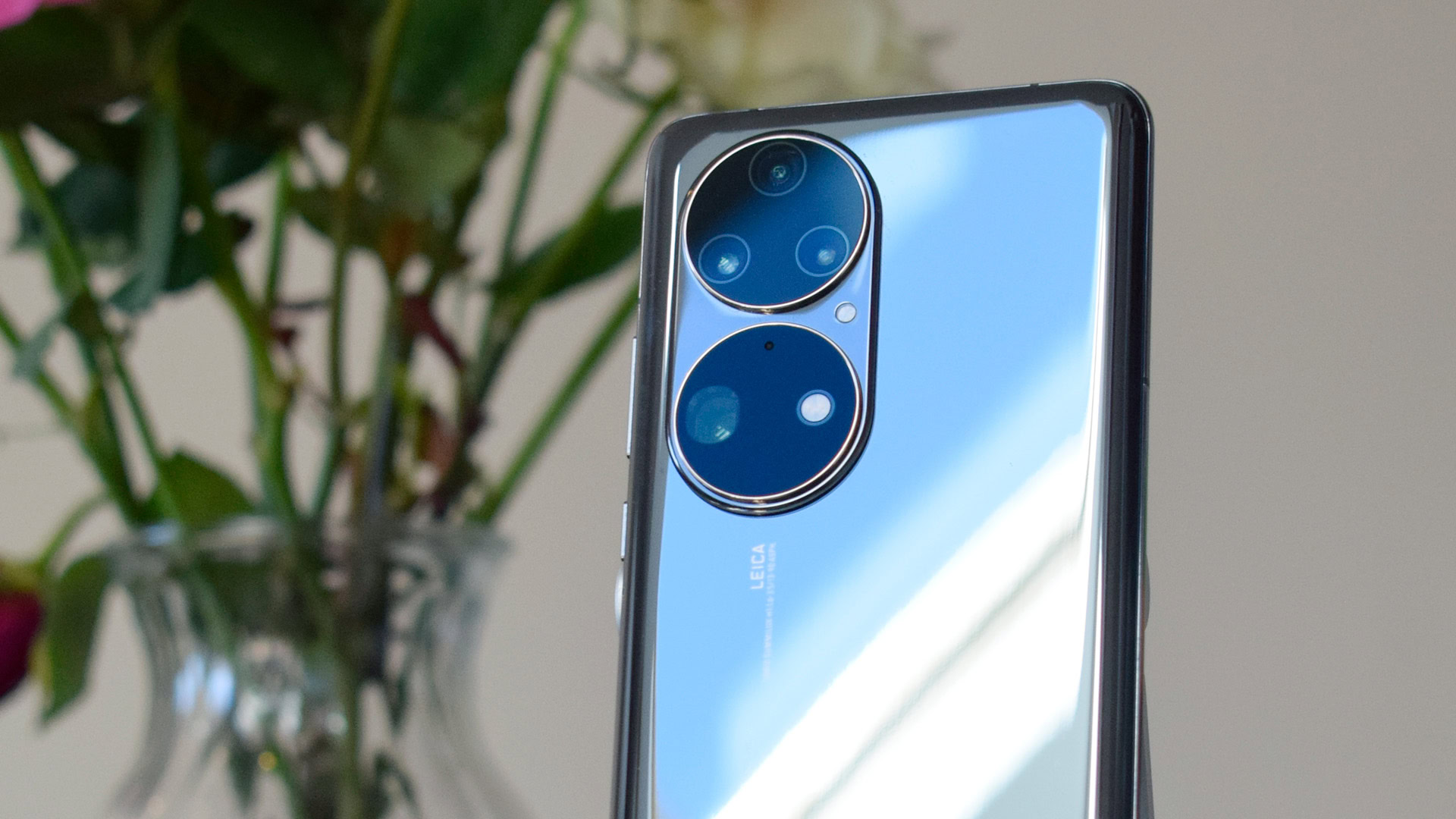
HUAWEI remains an industry leader when it comes to imaging hardware and software, and the P50 Pro leaves little doubt as to that. If you’re exclusively after one of the best camera phones around, the P50 Pro is certainly up there as a contender. Much of the phone’s other hardware is decent too, provided you can overlook the slightly older processor, middling battery life, and lack of 5G networking.
Unfortunately, hardware alone does not make for a best-in-class smartphone experience. EMUI 12 has more than its share of flaws. The lack of Google’s ecosystem and an old version of Android will still be an issue for most but the problems have extended to HUAWEI’s own apps and ecosystem too. As such, it’s a very difficult phone to recommend.
Looking for an alternative? These are the best Android phones
Huawei’s smartphone business is clearly in a tough spot, with both software and chipset hardware clearly not where the company or its customers would like it to be. I would be prepared to cut the phone some slack on the 5G downgrade, which you might be able to overlook in exchange for the excellent camera. Likewise, HUAWEI has tried to fix the app situation, and ideas like Petal Maps and Search do help. However, HUAWEI has no one but itself to blame for the P50 Pro’s biggest software issues.
Would you sell your soul to the ad devil for an amazing camera phone?
It’s in no way acceptable to push such a large number of pervasive in-app ads, let alone full-screen ones, on customers stumping up just shy of £1,100 for a premium smartphone. The phone feels like a data harvesting exercise and the day-to-day user experience suffers greatly as a result. Likewise, HUAWEI has made no public commitments to long-term support for its latest flagship.
Sadly, the HUAWEI P50 Pro hasn’t meaningfully moved on from the P40 Pro and is actually a worse phone in terms of the user experience. HUAWEI’s mobile division is clearly treading water but the P50 Pro is about as helpful as a pair of lead boots.